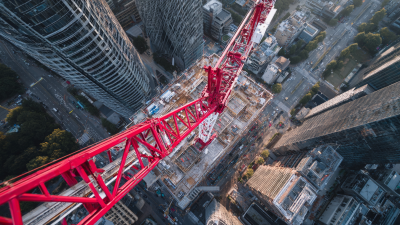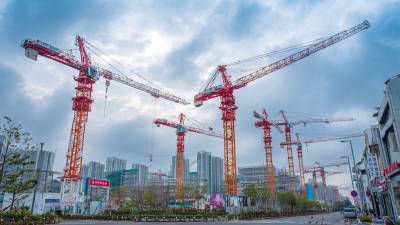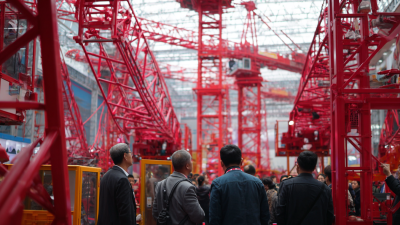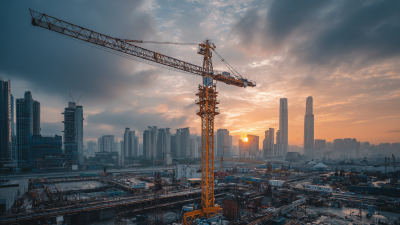In recent years, the construction industry has witnessed a remarkable surge, with tower cranes emerging as pivotal players in this growth narrative. As urbanization accelerates and infrastructure demands increase, the utilization of tower cranes has expanded significantly, contributing to an impressive 14% growth in construction activities worldwide.
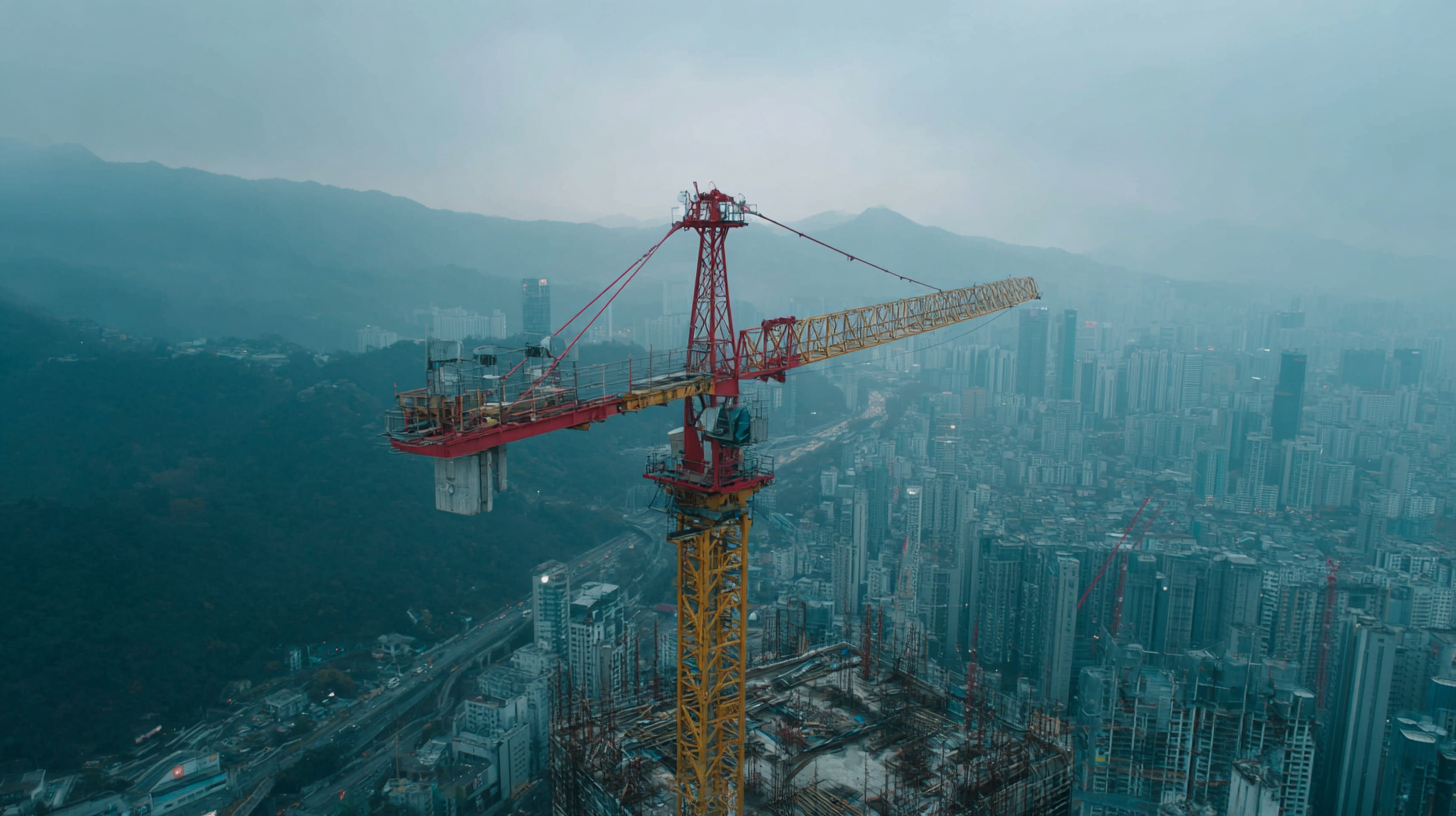 This article delves into the underlying factors propelling this trend, examining industry insights that highlight the efficiency and versatility of tower cranes in large-scale projects.
Furthermore, we will explore the cutting-edge safety innovations that are enhancing operational standards, ensuring that the rise of tower cranes is not only a testament to engineering prowess but also a commitment to worker safety and wellbeing.
Join us as we navigate the transformative role of tower cranes in reshaping skylines and driving the construction sector forward.
This article delves into the underlying factors propelling this trend, examining industry insights that highlight the efficiency and versatility of tower cranes in large-scale projects.
Furthermore, we will explore the cutting-edge safety innovations that are enhancing operational standards, ensuring that the rise of tower cranes is not only a testament to engineering prowess but also a commitment to worker safety and wellbeing.
Join us as we navigate the transformative role of tower cranes in reshaping skylines and driving the construction sector forward.
Tower cranes have become indispensable in modern construction, thanks to their remarkable efficiency and capability to handle heavy loads. These towering structures are designed to lift materials to significant heights, making them vital for skyscrapers, large commercial buildings, and infrastructure projects. With a maximum lifting capacity that can exceed 18 tons, tower cranes can deliver materials precisely where they are needed, thus streamlining workflows and enhancing project timelines.
As the construction industry continues to evolve, safety innovations play a crucial role in the growth of the tower crane market. The projected value of the Tower Crane Rental Market reaching USD 22.1 billion by 2030 underscores the increasing dependence on these machines. Advanced features such as real-time load monitoring, wind speed sensors, and automated safety systems significantly reduce the risk of accidents. These innovations not only foster a safer working environment but also attract more companies to invest in tower cranes, driving growth in this dynamic sector. By leveraging these technological advancements, businesses can enhance operational efficiency while ensuring the safety of their workforce on site.
 The construction industry is experiencing a notable surge in the demand for tower cranes, primarily driven by several key trends. According to a report by Research and Markets, the global tower crane market is expected to witness a compound annual growth rate (CAGR) of 14% from 2021 to 2026. This growth is fueled by the rapid urbanization and increasing infrastructure spending worldwide, particularly in emerging economies where urban expansion is at its peak.
The construction industry is experiencing a notable surge in the demand for tower cranes, primarily driven by several key trends. According to a report by Research and Markets, the global tower crane market is expected to witness a compound annual growth rate (CAGR) of 14% from 2021 to 2026. This growth is fueled by the rapid urbanization and increasing infrastructure spending worldwide, particularly in emerging economies where urban expansion is at its peak.
Moreover, safety innovations and advanced technologies have significantly enhanced the efficiency and reliability of tower cranes, making them indispensable in large-scale construction projects. The adoption of smart technologies, including IoT and AI-driven systems, has improved operational safety and minimized workplace accidents. For example, the use of load monitoring systems and automated safety checks has led to a reduction in fatalities at construction sites by up to 30%, according to a study by the International Labor Organization. This prioritization of safety is not only improving worker conditions but also boosting productivity, further driving the demand for tower cranes.
 The construction industry is witnessing significant advancements in safety technologies, particularly in the operation of tower cranes, which are essential for high-rise projects. The introduction of innovative systems, such as anti-collision technology and real-time load monitoring, has drastically improved operational safety. According to a report by MarketsandMarkets, the global construction safety market is expected to grow from $4.8 billion in 2020 to $8.2 billion by 2025, highlighting an increasing focus on safety innovations in the sector.
The construction industry is witnessing significant advancements in safety technologies, particularly in the operation of tower cranes, which are essential for high-rise projects. The introduction of innovative systems, such as anti-collision technology and real-time load monitoring, has drastically improved operational safety. According to a report by MarketsandMarkets, the global construction safety market is expected to grow from $4.8 billion in 2020 to $8.2 billion by 2025, highlighting an increasing focus on safety innovations in the sector.
Moreover, the integration of IoT (Internet of Things) capabilities into crane operations has enhanced monitoring and control measures. For instance, cranes equipped with smart sensors can provide data analytics regarding wind speeds and load weights, warning operators about potential hazards before they become critical issues. This proactive approach not only minimizes the risk of accidents but also increases productivity on construction sites. The latest safety protocols are paving the way for a more secure working environment, contributing to the overall 14% growth anticipated in the construction industry, as outlined in the latest report by Research and Markets.
When it comes to selecting and deploying tower cranes on job sites, efficient strategies are crucial for maximizing productivity and ensuring safety. Understanding the specific requirements of the construction project is the first step in this process. Factors such as the site layout, material handling needs, and the height of the structure being built all play a significant role in determining the appropriate crane type and configuration. By carefully analyzing these factors, construction managers can select cranes that not only fit the physical demands of the site but also enhance workflow efficiency.
Moreover, advancements in technology are transforming crane operation and deployment. The emergence of autonomous crane systems offers unprecedented levels of precision and safety, allowing for better coordination on busy job sites. Integrating such innovative solutions can streamline crane operations, minimizing downtime and reducing the risk of accidents. As the construction industry continues to evolve, staying abreast of these innovations will be key for stakeholders aiming to capitalize on the projected growth, thereby ensuring successful project completions with optimal efficiency.
| Dimension | Data |
|---|---|
| Construction Growth Rate | 14% |
| Average Tower Crane Height | 100 feet |
| Crane Operating Radius | 200 feet |
| Average Load Capacity | 20 tons |
| Daily Rental Rate | $1,500 |
| Safety Incident Rate (per 1,000 hours) | 0.5 |
| Estimated Job Site Deployment Time | 1 day |
| Average Operator Training Duration | 40 hours |
In the rapidly growing construction industry, adhering to regulatory standards and implementing best practices in tower crane safety management have become pivotal. As tower cranes rise in prominence, ensuring the safety of their operation is not just a regulatory requirement but a moral obligation. Comprehensive safety protocols must be established, focusing on operator training, regular equipment inspections, and adherence to local regulations, which help prevent accidents and improve overall site safety.
Moreover, continuous advancements in safety technology are transforming tower crane operations. Innovations such as load monitoring systems, anti-collision technologies, and automated safety shut-offs are being integrated into crane operations, significantly reducing the risk of accidents. Companies are also encouraged to engage in regular safety audits and invest in safety training for their workforce to foster a culture of safety awareness. These proactive measures not only comply with regulatory standards but also enhance operational efficiency and ensure the well-being of all project stakeholders.

